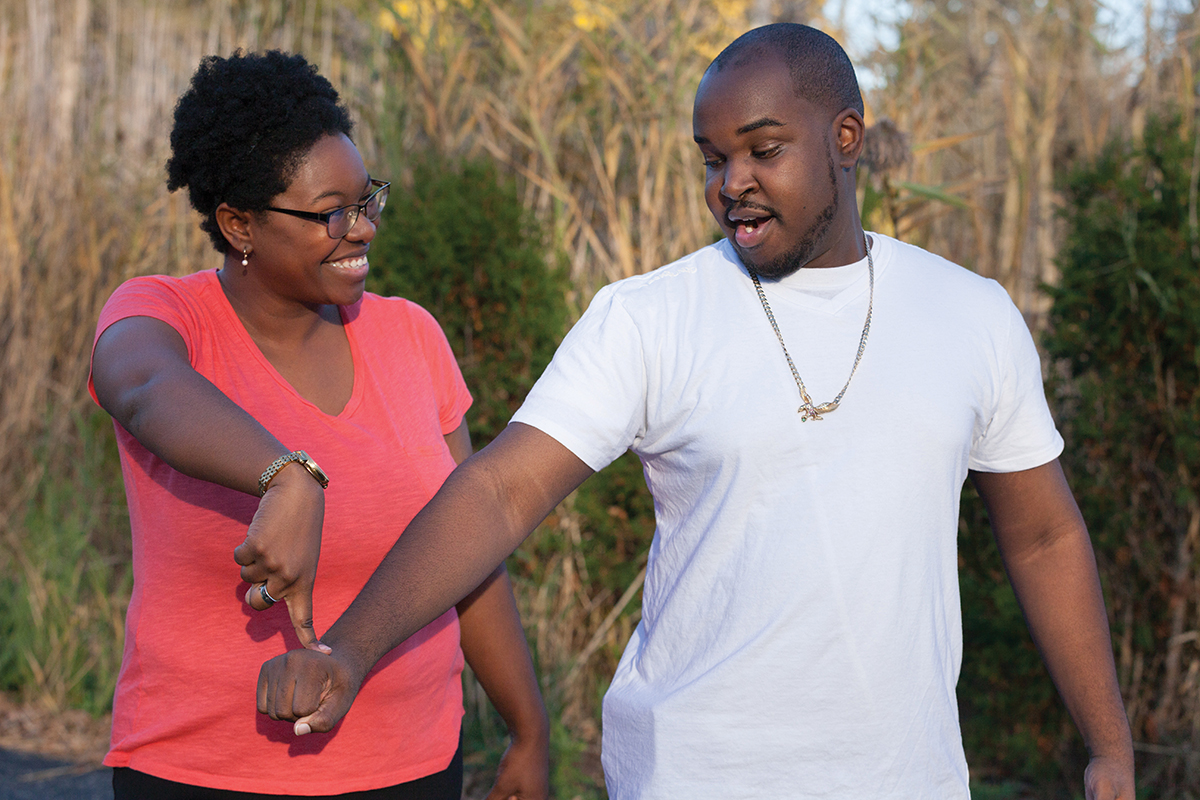Your Poor Body Mechanics Tighten Your Headache Muscles
Your headaches may build up from your day-to-day mental and physical stressors. You eventually reach a threshold where your headache pops out of the box from which it has been kept in. Therefore, it behooves you to remove every stressor that can build up to allow it to escape. Poor body mechanics create one such stressor.
Poor upper body mechanics tighten up your headache producing muscles. You will not necessarily feel these muscles tighten when you engage in poor body mechanics. All you may notice is that your muscles always seem to be generally tight in your neck and shoulder region. However, you will not know how they got so tight in the first place.
Arm-Straight Activity is Not Efficient.
What is wrong with lifting with a straight arm? The photo gives a good demonstration of how much less weight you can lift with your arm straight.
The person in the photo does not have enough strength in the shoulder to resist the downward pressure of simple finger pushing downwards on his hand when the arm is straight. Yet, if the elbow is bent, no finger pressure will be enough for the arm to collapse. It is all about leverage.
A straight arm lift shuts down your biceps and upper arm muscles and takes them out of the picture. Consequently, you automatically tighten up your headache-producing muscles because the upper arm muscles that should have helped lift no longer can. The force of the weight bypasses your upper arm and elbow muscles and goes directly to your shoulder joint and neck area.
Consequently, your shoulder and neck muscles contract too much. When you stop lifting, your shoulder and neck muscles may or may not return to their relaxed state. They may remain tight, primed to deliver you a headache punch later.
Your head may also poke forward and tighten up two other headache muscles. The sternocleidomastoid on the side of the neck tightens. The occipital muscles in the back of the head and neck clamp down. These muscles all trigger significant headaches.
Bend Your Elbow!
Keep your elbow bent! As a result of keeping a slight bend in your elbow, your biceps can now play a much bigger role in your activity.
Come as close as you can to the object you want to lift. Then you can keep bend in your elbow and not straighten your arm to reach the object.
Form Fails in the Gym
A brief digression is warranted based on the numerous rotator cuff injuries I have seen over my career. A number of these injuries stem from poor gym exercise technique.
Just because an exercise can be done does not mean it should be done. There are some exercises that make me cringe when I see people perform them. One such exercise is the Fly, where people take dumbbells, bring their straight arms out to their sides, palms face downwards.
When the arm is lifted out to the side, people smash part of the rotator cuff into a bony projection called the acromion, which is part of the shoulder blade. Over time, the exercise will saw away at the rotator cuff. An exercise should be functional. Unless you are indeed learning how to fly, find a different workout exercise.
Keep in mind that your rotator cuff will have less rubbing pressure on it if you rotate your arms with the palms facing upwards. Minimize the time spent with the palms facing downwards with your arms extended.
Connect Your Lower Body to Your Upper Body
Your muscles are meant to work together as a system, not individually as in the Fly exercise. Use your core to stabilize your trunk to increase your efficiency. Do not lean forward any farther than you need to. Keep a stable base of support.
Canadian researcher Stuart McGill demonstrated how important it is to have a strong core to link the upper and lower body into one system. His books Ultimate Back Fitness and Performance and Low Back Disorders are excellent resources if you have an interest in such things.
If your core muscles in your trunk have good endurance and are stable, your upper body can receive help from your lower. Your upper body muscles now have a stable, not sloppy, base of support to work off from.
For instance, lift a bag of groceries from the car. If you cannot tighten your core muscles properly, your trunk slumps forward due to your inability to keep it stable. Consequently, you do not have enough support from the lower body. As a result, you need to put much more stress on your shoulder and neck muscles to do the same task.
Body Mechanics Basics
Many body mechanics suggestions seem straightforward, no pun intended. Yet many people I see with headaches benefit from these simple suggestions to correct poor movement patterns. Your lower body mechanics also have a role to play in your headaches. Stay tuned next week how you can improve here as well.
-You understand that if not done properly, some techniques and exercises described in this blog could harm you. Any activities you perform are at your own risk, and you expressly agree to waive any claims against the author for any harm that may arise from your own actions. By reading this blog and conducting these exercises, you accept this risk. This blog provides content related to physical and/or mental health issues. As such, your use of techniques described acts as your acceptance of this disclaimer.
-Consult Chapter 2 in my book, “Calming the Headache Storm” to make sure the headache is not the sign of a more serious problem. The techniques, advice and strategies contained in this blog may not be suitable for every individual and should be abandoned if your headache increases. Seek the advice of your physician.
